Where are you from?_Stories
Net-art - involving a VOD archive
FILE, New Forms Festival, [R] [R] [F] 2005
Global project 2002 - ongoing
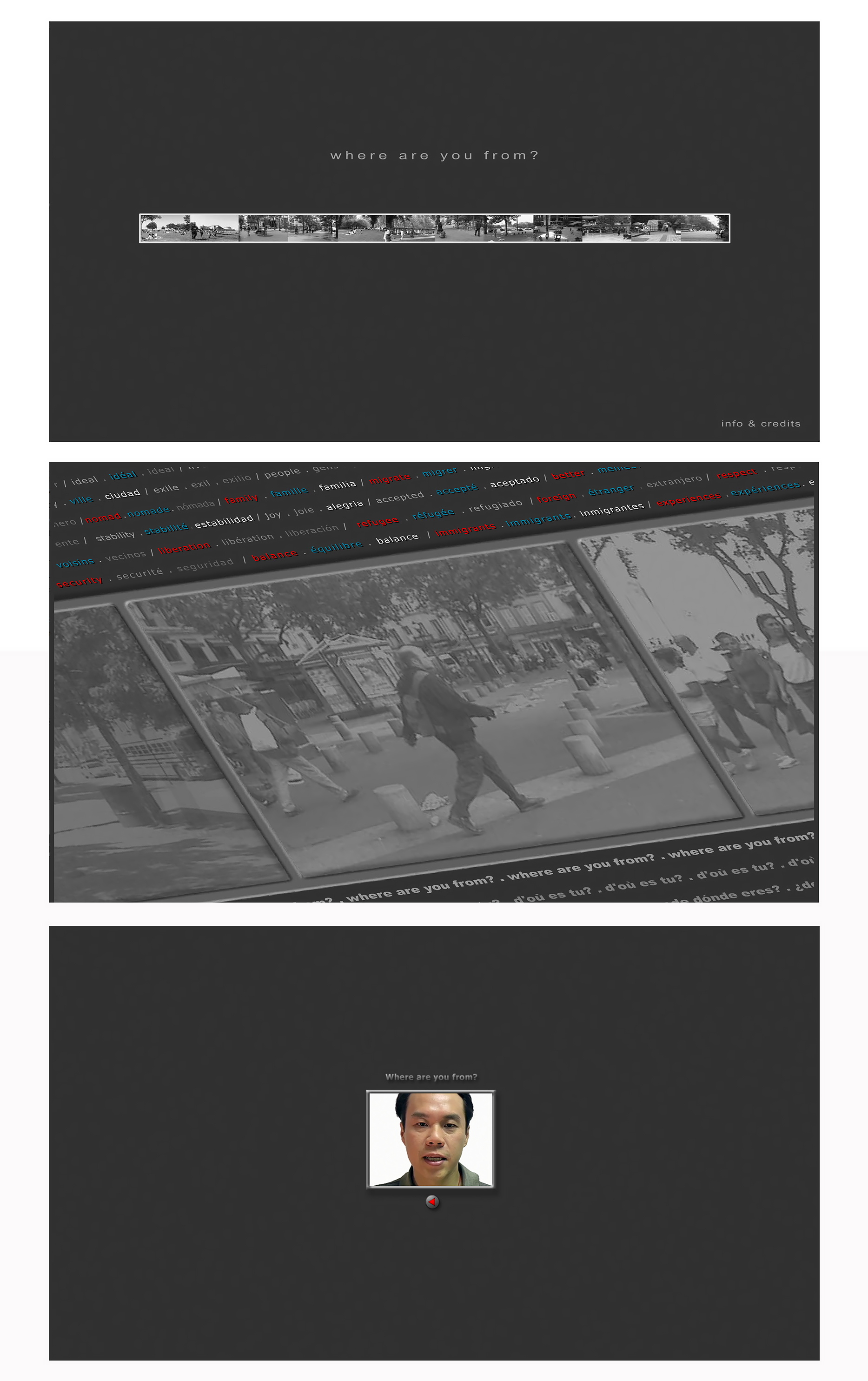
URL : http://www.hometransfer.org/where/stories.html
Credits : http://www.hometransfer.org/where/credits1.html
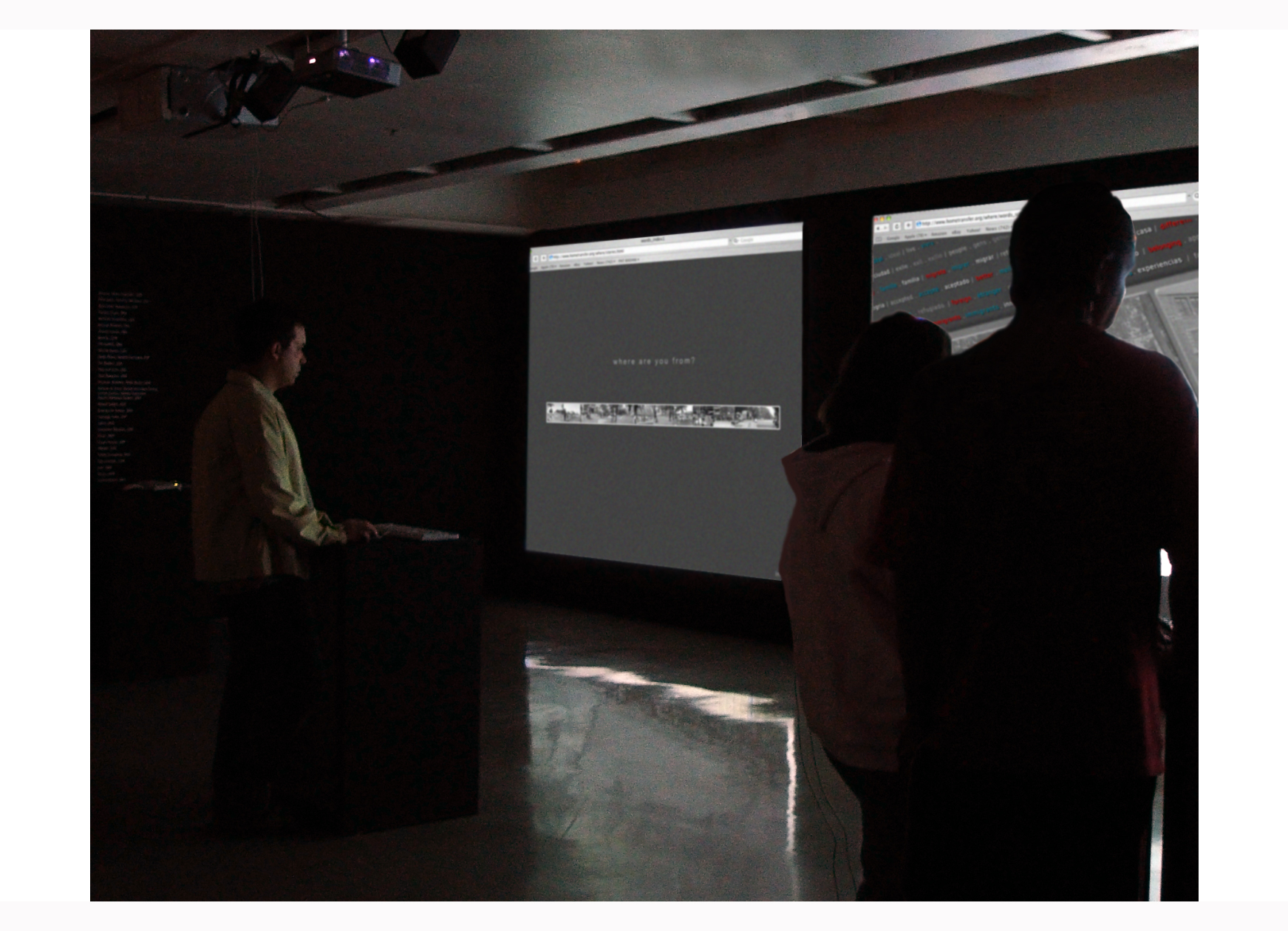
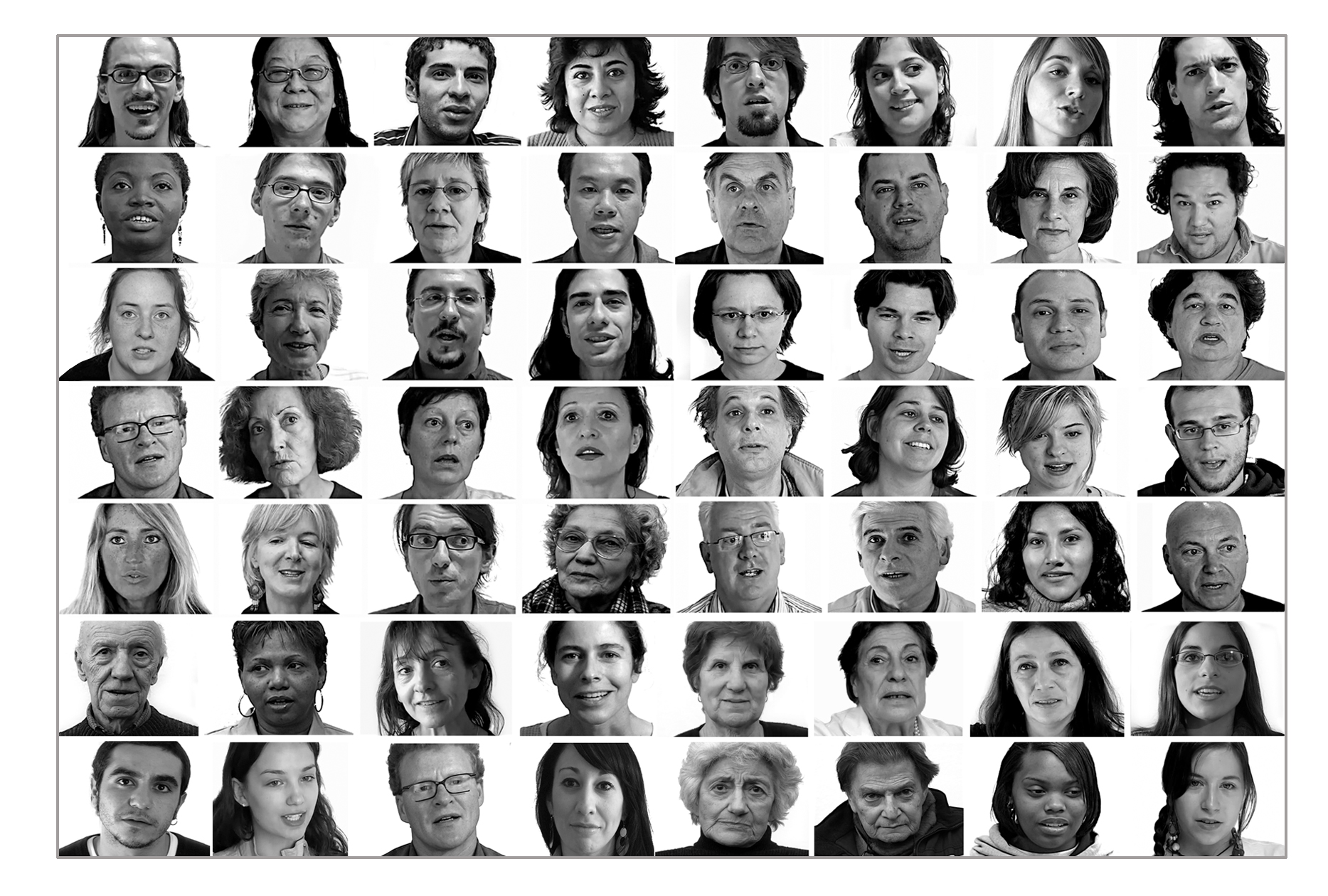
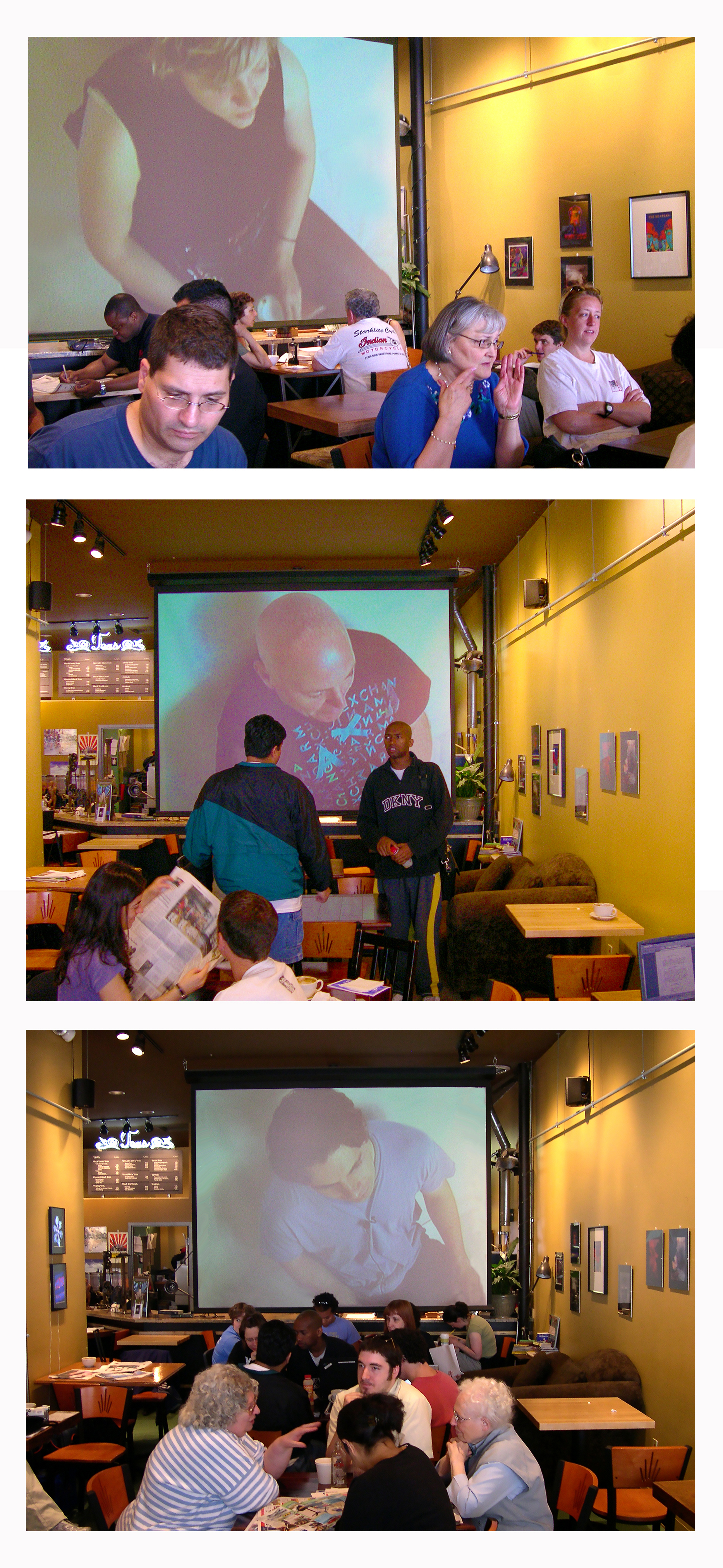
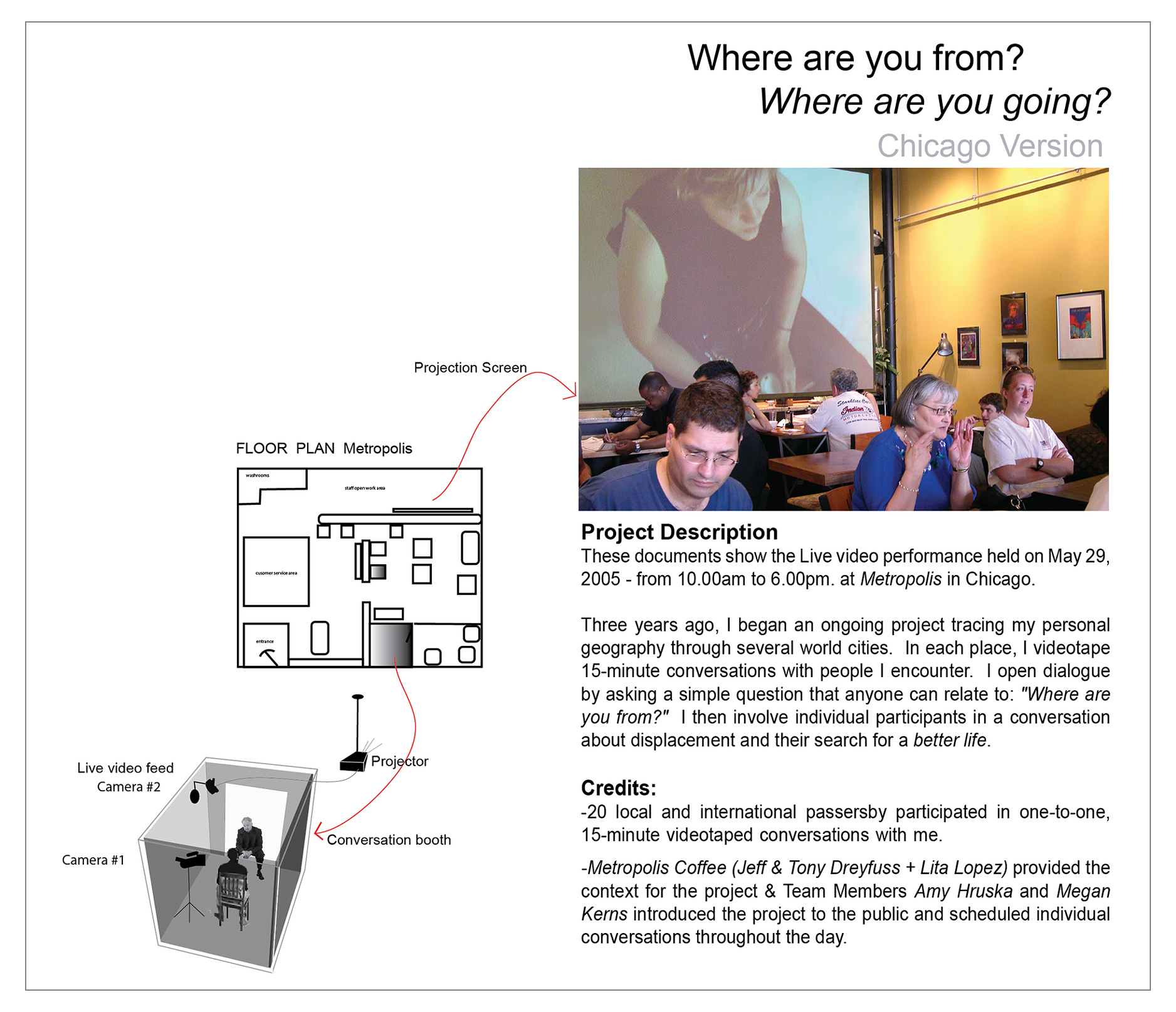
http://www.hometransfer.org/metropolis/metropolis.htm
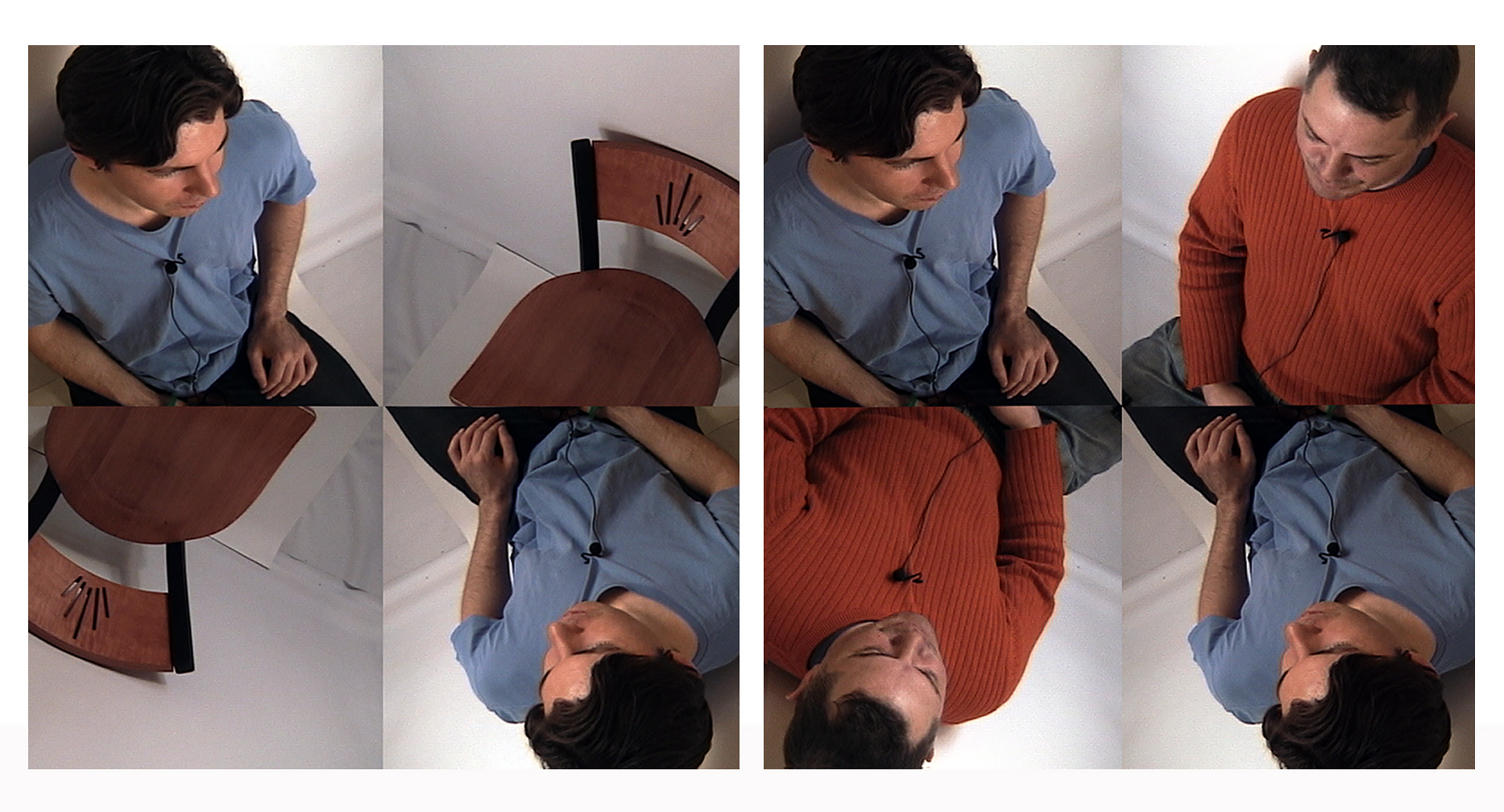
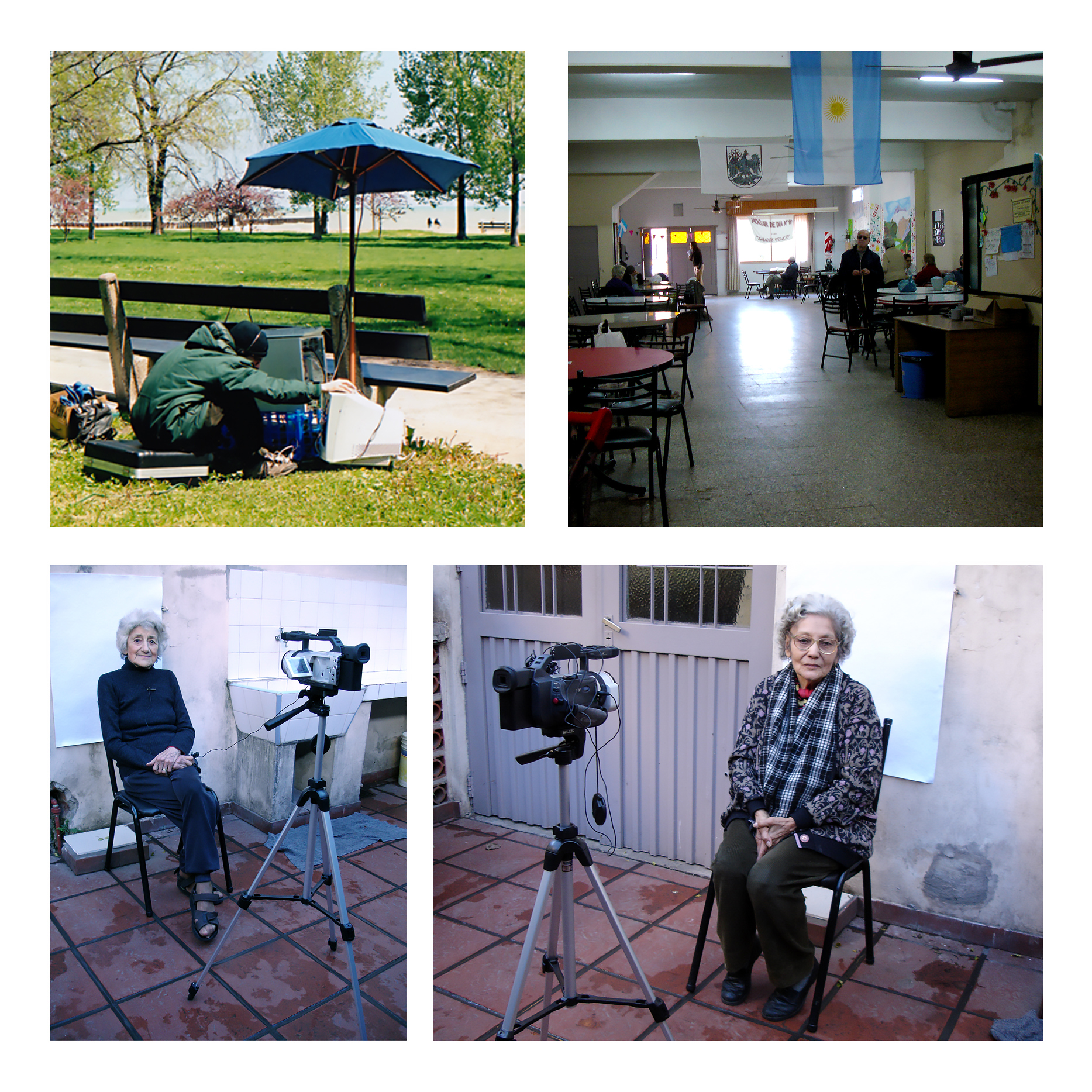
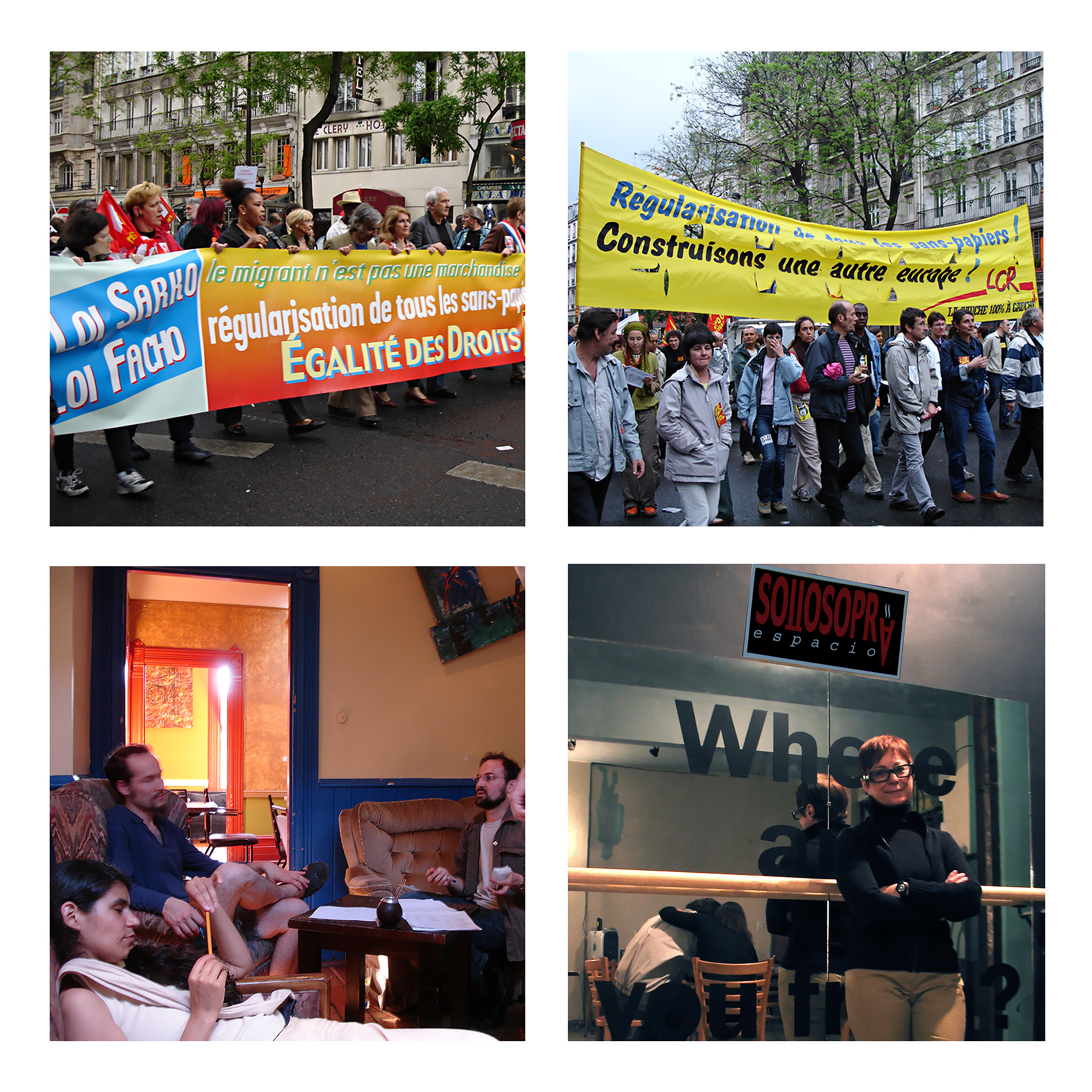
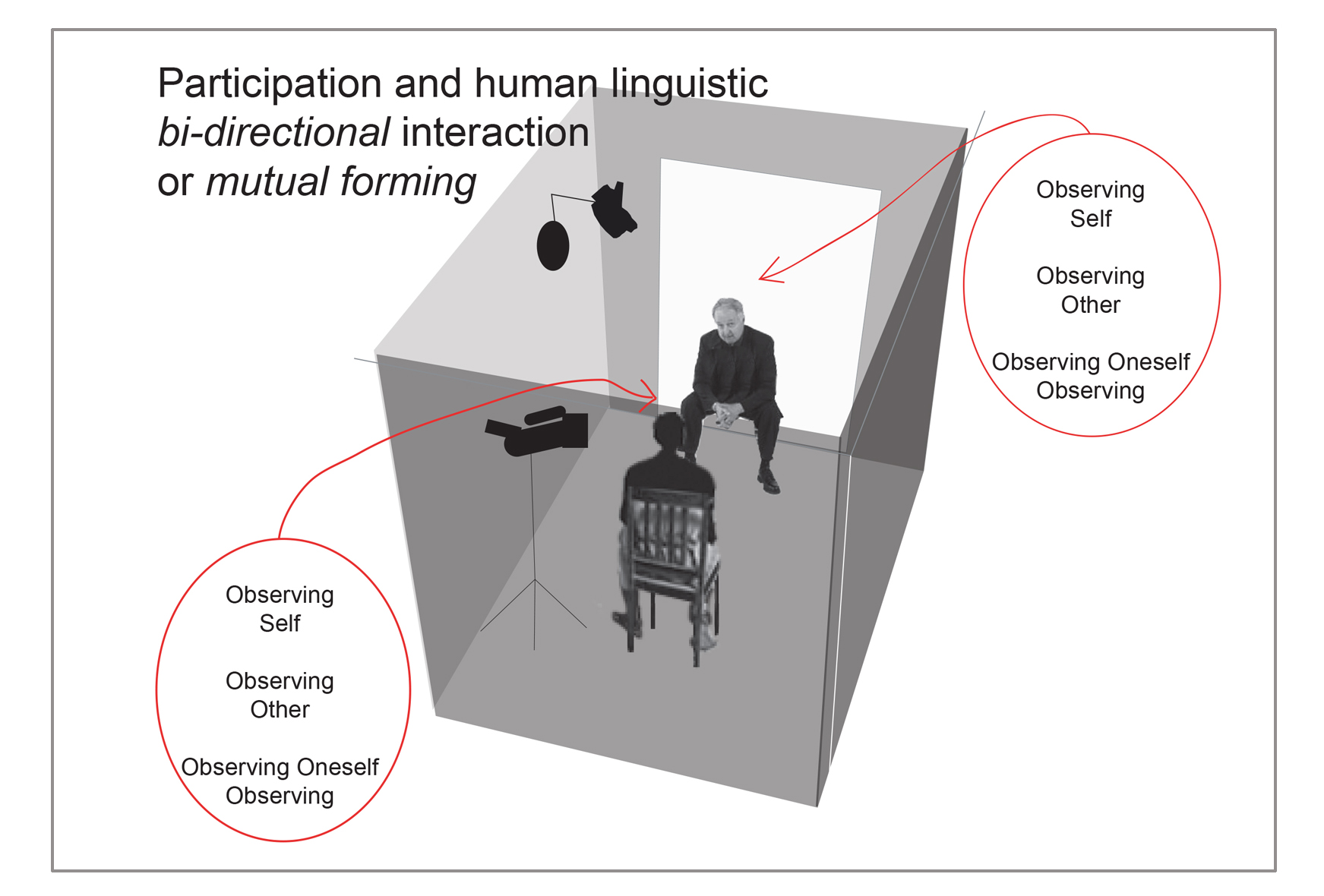
The Relativity of Boundaries: Art, Technology and Storytelling.
by Flavia Caviezel
ISEA Belfast, 2009
Interactive Storytelling: Shared Authority – Documentary and Social Inclusion
Pat Badani’s project titled “Where are you from?_Stories” is situated at the junction between interactive storytelling in net.art, documentary video, and visual culture. It draws upon Live Events and dialogue, culminating in a web-based video archive about nomadism and migration, issues of global relevance.
“Where are you from?” is a universal question exchanged when people meet for the first time so that they may contextualize each other within territory, nation or family relations – an exercise in coming to grips with the strangeness of others. There were times when the question was addressed to someone coming from a nearby village or from another valley. Today, it is commonly directed towards travelers from foreign countries such as migrants and tourists, a phenomenon that signals a renewed perception of time and space; a new understanding of the larger formations of culture today; (1) and the relativity of boundaries. Local places and global networks both stage complex relations between centers and peripheries, as well as between people and the places to which they belong. Badani set out to explore these very relations in her multi-year project.
Globalization is a new word to describe an old process begun at the dawn of man when the first migrants walked out of Africa. The wish to leave the place from where one comes from, and to seek a better future elsewhere is not new, it always has been a central motivation for migration, a process that results in an increasingly interconnected world. But, if a German professional interviewed for Pat Badani’s Internet platform describes himself as a nomad who lives in the same location for only 2 to 4 years, the inevitable question follows: “Where are you going?” and “What for?” Is this type of nomadism a sign of escape; a means to sustain the illusion of improvement by perpetually moving forward; or the result of an imperative to seek a better life elsewhere politically and financially? The latter was certainly the case for a Bosnian refugee whose answer to Badani’s queries was: “The war started in my country, and we had to make a decision, not for us because our lives were already messed up, but a good decision for our daughter, so we escaped.” These are but two examples from fifty-five “first-person” testimonies archived in the online video database. Badani’s aim was to bring together into one work a plurality of views about displacement from citizens in today’s globally interconnected world: tourists, nomads, refugees, immigrants, local migrants and sedentary locals. Her multifocal vantage point reflects the open notion of the term “migration” used in contemporary theories and artworks today.
What is at play in the work is the migration of people and their stories, languages, cultural imagination, and the hybrid rather than the single perspective of the Nation looking at the others, a perspective similarly found in the European project: “Projekt Migration” (3) where migration is seen as a main force for social change. Also at play is the migration of images-in-motion brought about by the digital revolution where images migrate from film-theatres to video-screening rooms, to exhibition-spaces, and to Web-spaces.
Gathering stories during Live Events
The stories assembled in the web-archive were filmed while Badani re-traced her personal nomadic history in six cities: Montreal, Toronto, Chicago, Mexico City, Buenos Aires and Paris. After creating Live Events in carefully selected public locations in these cities, Badani invited citizens-at-large to share personal stories integrating images of self and translocal experiences.
Each Live Event to film the stories involved developing networks with local businesses; government agencies; and professionals outside the cultural realm, who facilitated and made possible the creation of communicational spaces where Badani could video-tape conversations with local inhabitants. For the used methodology the artist was required to work outside an “artist network” with decision-makers and with the public-at-large in local communities in several global locations.
Not reducible to the visual and contextual in nature, the work unfolds through a process of performative interaction with the aim of facilitating dialogue, a type of exchange during which storytelling becomes an integral part of the work; it is its material. This type of art departs from accepted models in art practice. In line with ethnographic practices, Badani required the skill to draw contributions from non-art participants who were thereby involved in the process of sense-making and art-making. Badani sought out to establish cross-cultural dialogue and exchange taking care not to sacrifice the unique identities of individual speakers, a strategy that implied surrendering artistic control in favor of intersubjective engagement.
One example is the Live Event conducted in Chicago’s “Metropolis Coffee,” a neighborhood coffeehouse with an independent and community spirit. Badani chose this particular coffeehouse because, faithful to its name, its customers reflected a true “metropolitan” hybridity: variety of age, gender, ethnic and national origin, occupation, and sexual orientation. People ranging between twenty and eighty years of age, from all walks of life, told stories about the location of “home” - be it physical or mental, cultural, linguistic, or ideological - about displacement and about their search for a better life.
A young woman from Bulgaria who, after immigrating to Canada with her mother, is now studying in Chicago claims: “A better life is living in better communities. I come from a communist background and people [in Bulgaria] are much closer, they help each other more, nobody is left behind that much…people have a sense of belonging and people care for each other much more than in western societies where it’s all about the money”. A young woman, who was born in Israel to African American parents and who has lived in Chicago since age seven, believes that it is important that she knows her own history and that by taking that history with her, any location can become “home”. In her own words: “Home is acknowledging your present and past, combining those two and making something comfortable for yourself”.
Mapping displacement
At the end of her journey in 2006, Pat Badani had filmed over 130 “first-person” testimonies during Live Events in city parks, coffee-shops, community centers, motels and artist-run-spaces. The starting point for the interviews was a simple question accessible across cultures: "Where are you from?" Then, participants were involved in telling stories about their lives, their home, their territory, and their displacements. They “mapped” their movements and reasons for shifting from one place to another by describing their experiences during video taped sessions.
Badani then chose fifty-five representative video-clips in English, Spanish and French; and careful not to reproduce the images of migrants and refugees that have made their way into public consciousness through media, she gathered them in her web-sited archive.
Interactive storytelling in Net art, and Ethnographic practices
The work is inscribed within netart projects, an emerging practice in the late 90s where online visitors, or ‘users’, have the possibility to interact and participate by changing the material or contributing material. Often, one part of the project takes place outside of the Internet, where interaction is placed at the service of communication experiments aimed at engaging reflection and dialogue, as in the case of Badani’s project. These investigations at the intersection of art, technology and visual culture meld form and content and examine the mediation of everyday life.
The videos in “Where are you from?_Stories.” are hyperlinked to a vocabulary of frequently used words (foreigner – accepted – familiarity - money-security…), extracted from these transnational, vernacular stories collected since 2002.
The work integrates interaction and narrative, but it is devoid of a plot present in conventional literary storytelling. The visitor’s aesthetic experience is not directed by the sense of inevitability existing in traditional, linear narratives. By blending strategies currently used in fields that converge with computers: interactive fiction, participatory gaming, and new conventions in storytelling in television and film; the work is structured so that visitors construct meaning through navigating and selecting archived stories at random (in a rhizomatic way), drawing individualized connections between the different stories. (4).
Another aspect of the project worth mentioning is its affinity to “oral culture” as means of acquiring knowledge and possibly creating and representing “other” meanings. The method Badani has used is also similar to collaborative approaches in “community videos” in America, Australia and Europe made in the late 70s and 80s – such as Headwaters TV at Appalshop Media Center (USA). These works emerged from the initiative of a community or a political group. Today, digital media productions also often comprise a large number of collaborators that include the audience as active participant, giving rise to the notion of multiple (or distributed) authorship, a type of practice that has gained new currency. Collaborative works, for example, aspire to egalitarian conditions and multiple opportunities for interaction, an extension of geographical spaces for action and reflection. This approach relies on ethnographic and journalistic practices; and on the Internet as an interactive public broadcasting environment for the dissemination of ideas - a place of convergence for migrant citizens in today’s globally interconnected world.
Relativity of Bounderies?
Badani’s project holds up a mirror to current technologically mediated modes of communication and to their impact on issues of identity. “Where are you from?” is not only a question addressing the relativity of national boundaries in physical geography, or in the virtual web-world understood since the ‘90s as a space with no national boundaries; it is also a question addressing how identity is expressed in recent young user platforms like myspace.com or mypix.ch. In the latter instances it seems important that users manifest their (virtual) identity and that they position themselves within a distinct location, building an identity through body AND nation – a complete self-branding. (5) What appears here reflects a “double bind” phenomenon observable also in the movement of people within the European community, because the concept of boundaries has become relative in a geopolitical and ideological sense thanks to the Schengen contracts allowing free movement of people across Europe. (6) But, while on the one hand there is an attempt to make boundaries between countries more open, on the other hand, border control has elaborated stricter measures through so-called “early controls” or biometrical controls. Further, a “double bind” is also evidenced in a vision of openness and interconnectedness that is counterbalanced with the fear of identity loss and a wish to reaffirm “local” individuality -whatever that might be –a pull in the opposite direction of post-national citizenship visions that hinders its development whilst circumstances continue to change around us and through us.
Pat Badani’s “Where are you from?_Stories” web-work can be experienced at: http://www.hometransfer.org/where/stories.html
The project received a Canada Council Media Arts Research Grant. It has been exhibited in “Extranjerías” Espacio Fundación Telefónica, Buenos Aires, Argentina (2009); and in at FILE’05 in Sao Paolo, Brazil.
------------------------
Flavia Caviezel studied (Visual) Anthropology, Film and Constitutional Law at the Universities Berne and Zurich. She is an independent documentary video-artist, researcher and Lecturer and lives in Switzerland. (flavia.caviezel@bluemail.ch)
Pat Badani is an inter-media artist, educator and researcher. She studied at the University of Alberta (Canada) and at the School of the Art Institute of Chicago (MFA) and now lives and works in Chicago, U.S.A. (pbadani@ilstu.edu)
------------------------
References
(1) For a discussion on culture see Arjun Appadurai’s “concept of difference, a contrastive rather than a substantive property of certain things”, in “Modernity at Large: Cultural Dimensions of Globalization”. University of Minnesota Press. Minneapolis, 1996, p. 11-16.
(2) See FILE’05 (International Festival of Electronic Language 2005): http://www.file.org.br/index.php?content_id=158&sel=5.0&lang=en
(3) See www.transitmigration.org and the associated exhibition catalogue: “Projekt Migration”.
(4) For a full discussion on the scope of media interactions see Noah Wardrip-Furin publication “First Person: New Media as Story, Performance, and Game”, MIT Press, Cambridge, 2006.
(5) For details about the (self-) representation of young people on internet communities and generally on the notion of body identity see the research project: www.ith-z.ch/brands/index/home and the magazine “gepflegt krass” (planned for autumn 2007).
(6) For details about “Schengen and the Free Movement of People Across Europe” see: http://www.migrationinformation.org/Feature/display.cfm?ID=338